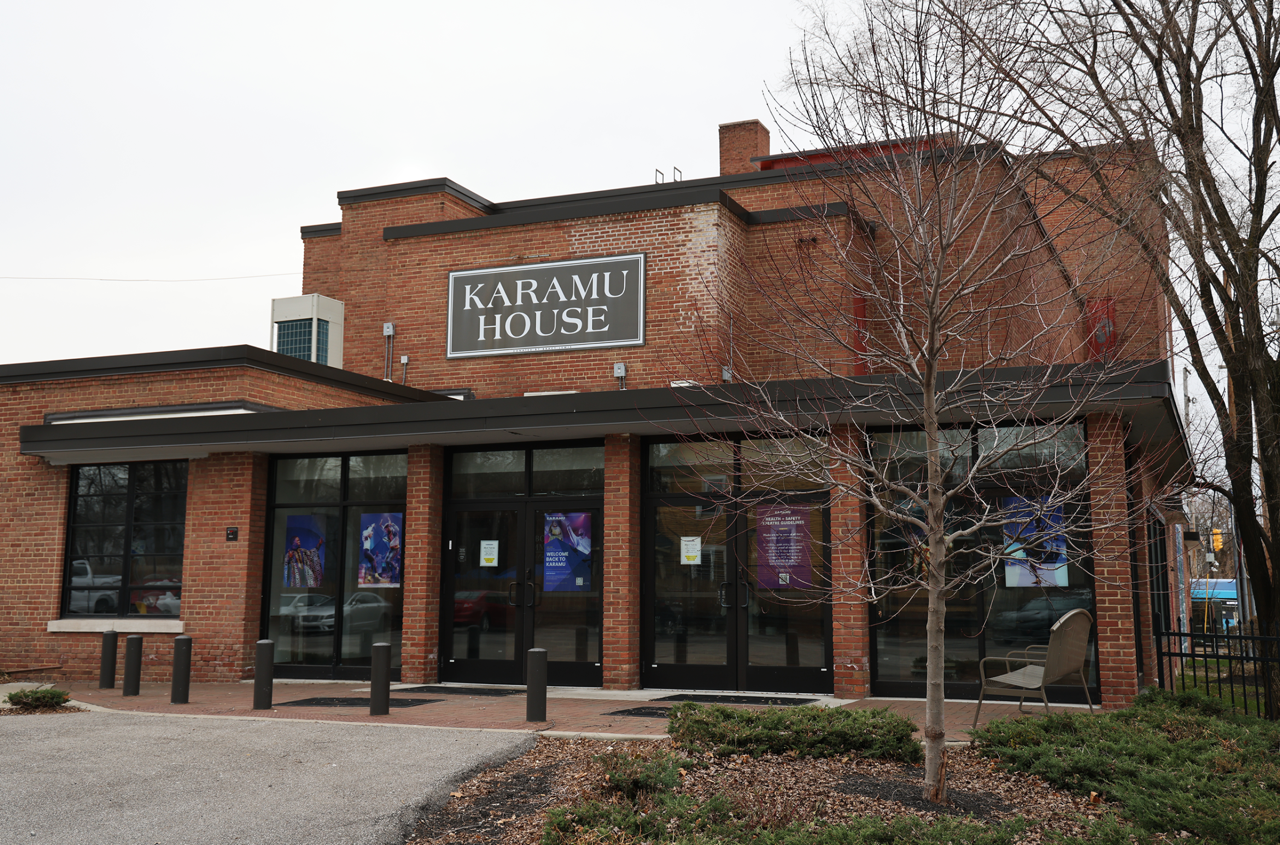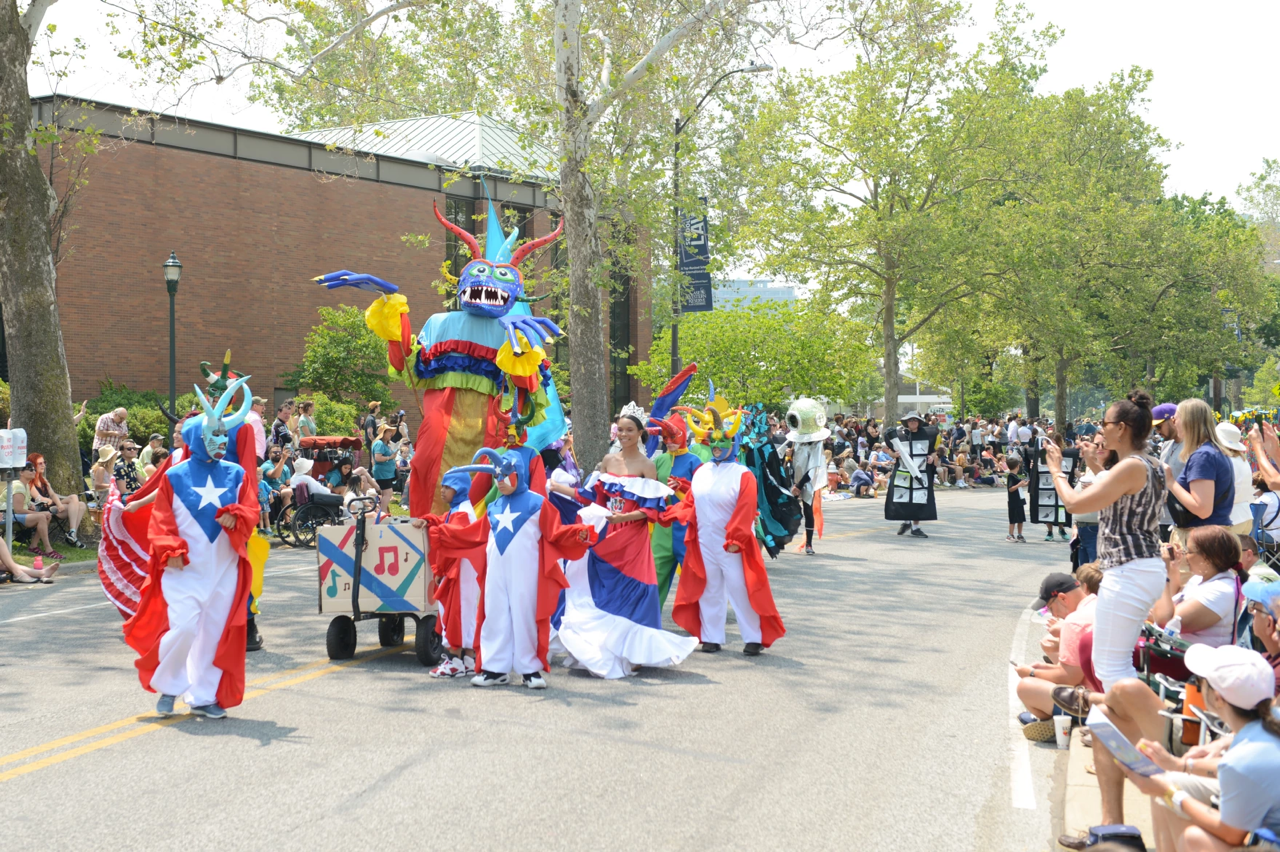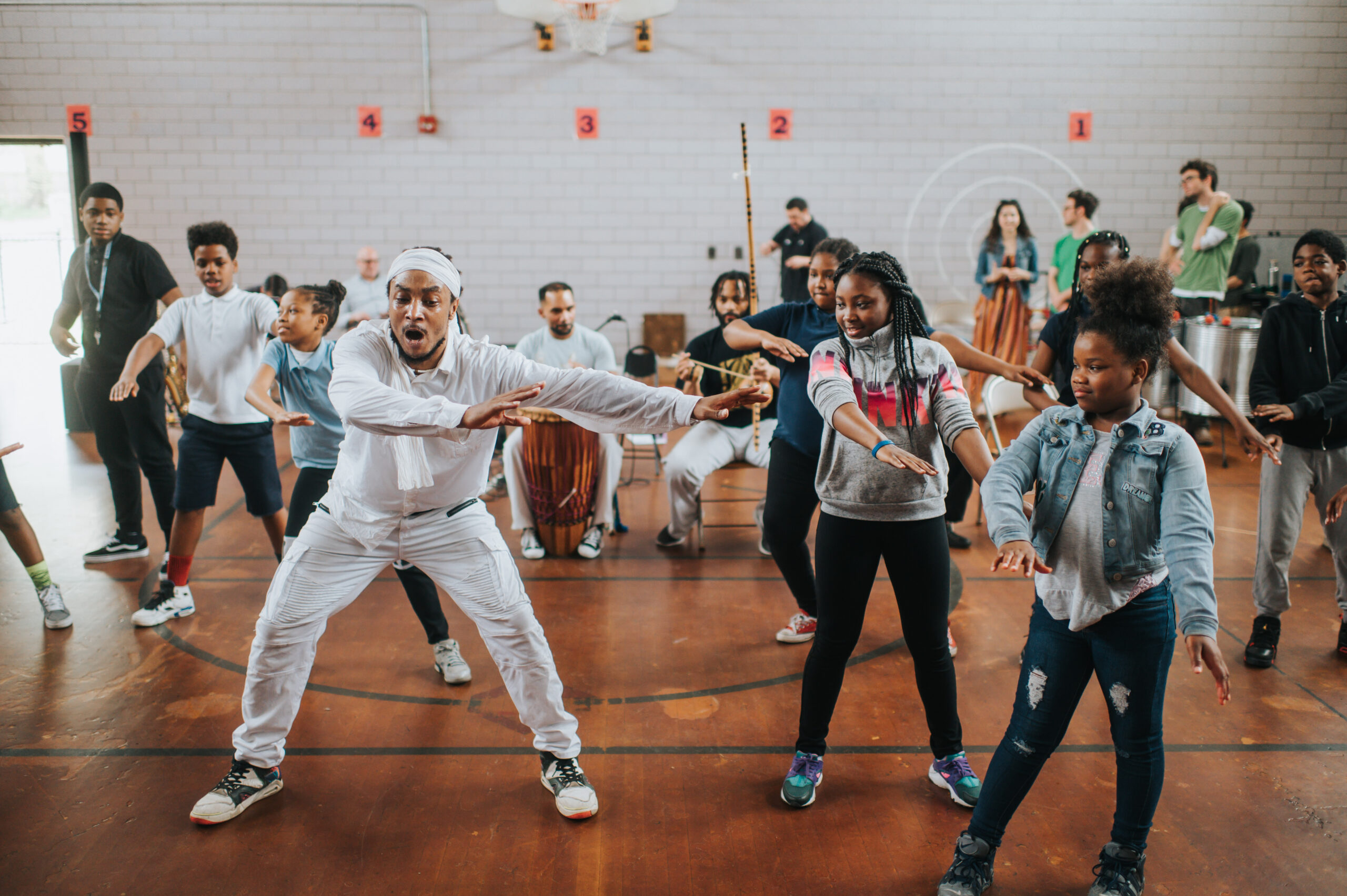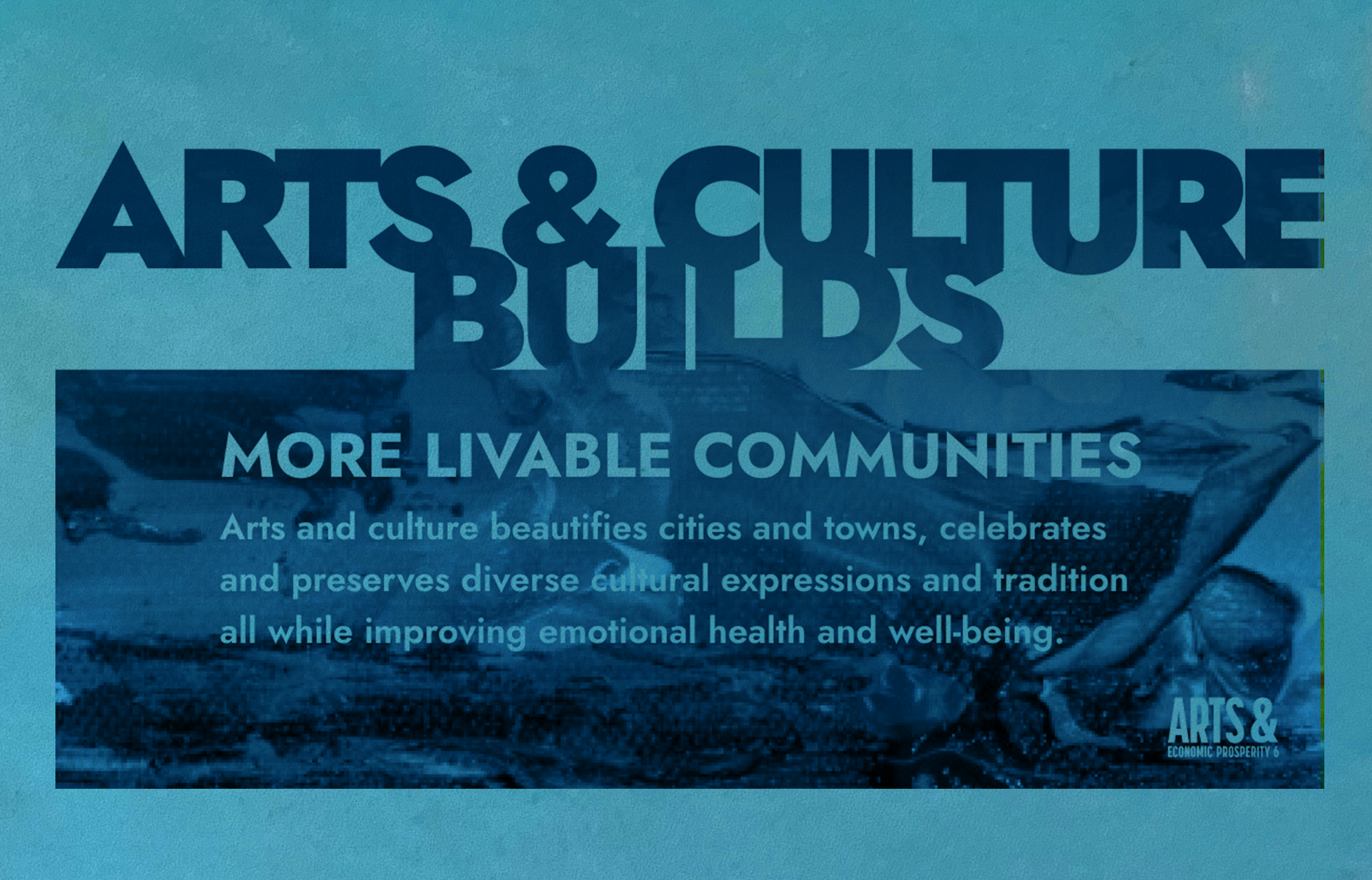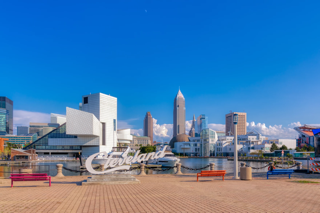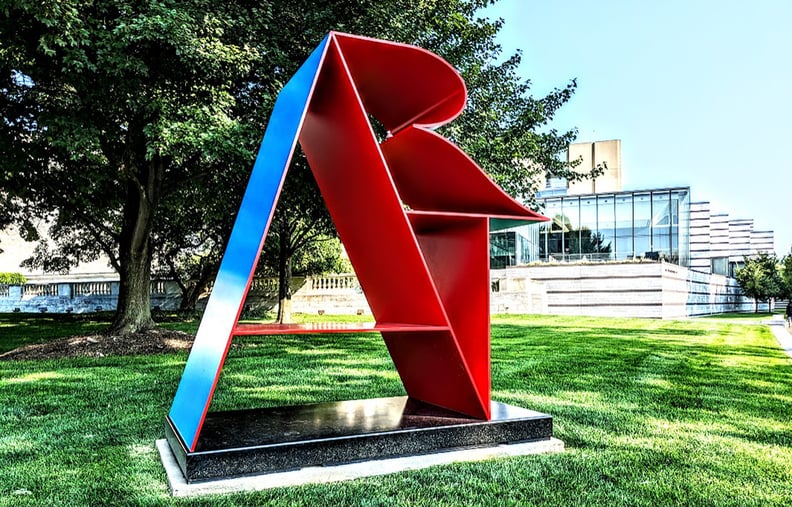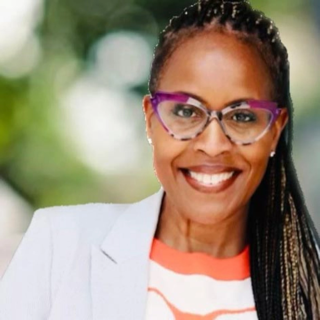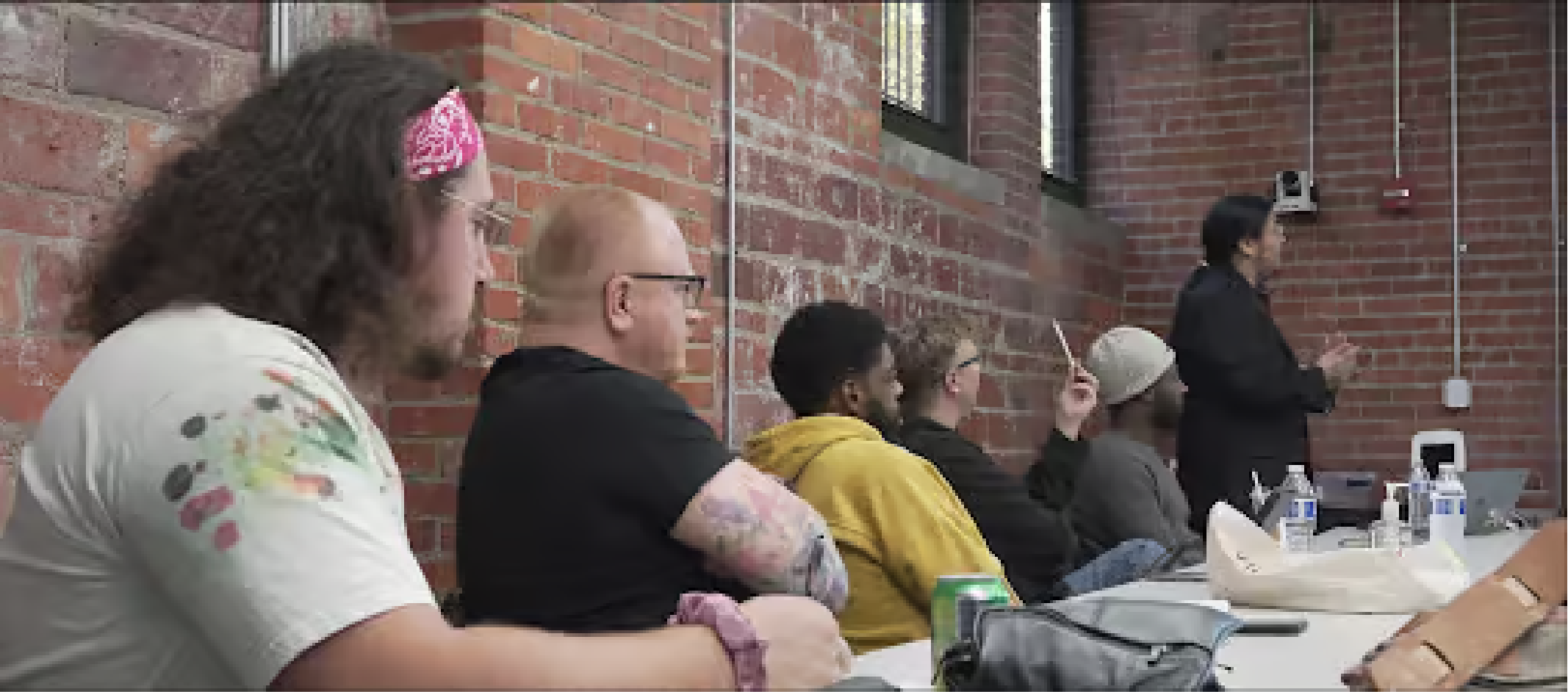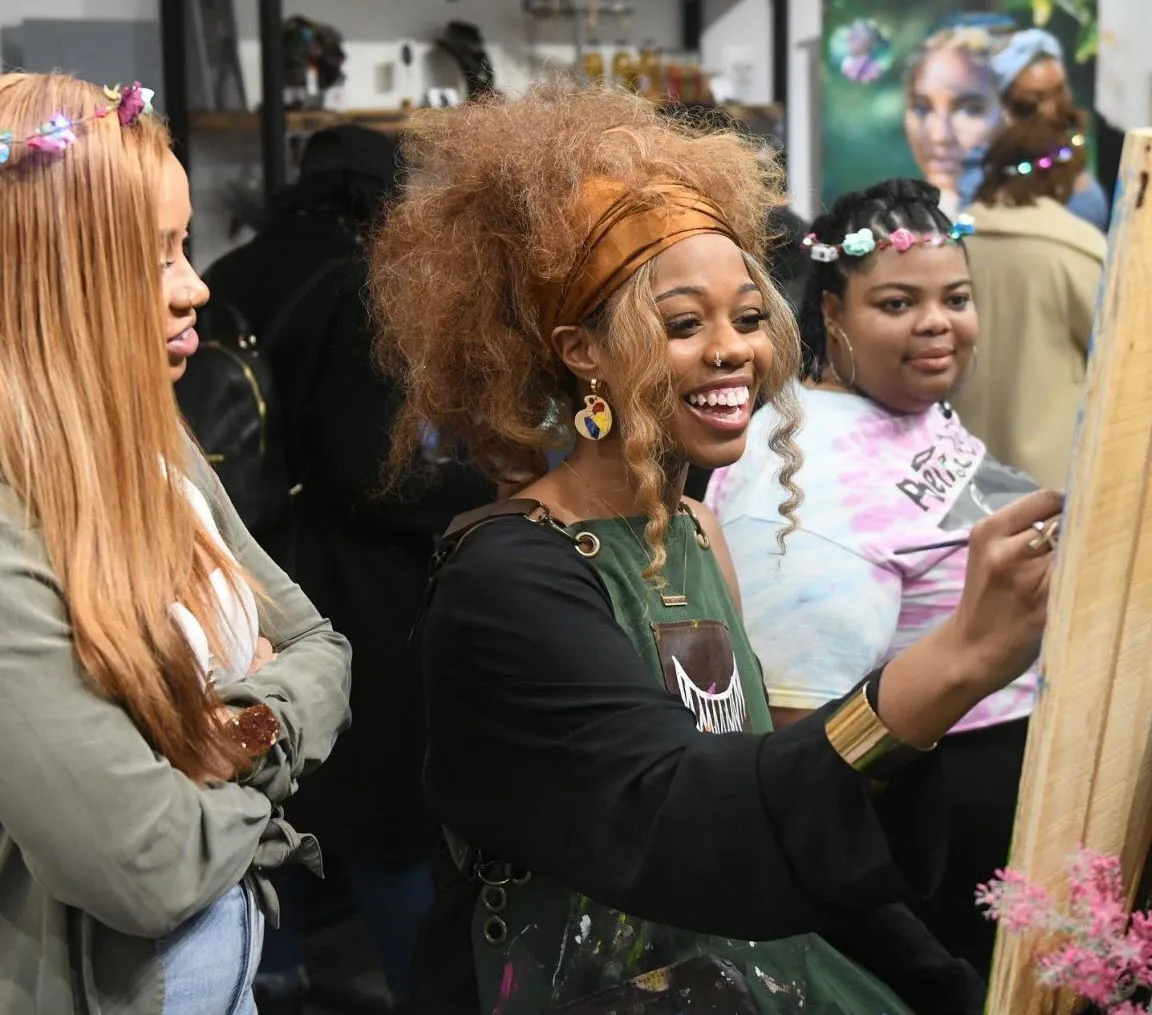Arts and culture generate more than $500 million for Cuyahoga County economy, new study shows
Source: Signal Cleveland
Date: October 12, 2023
Abstract:
Cuyahoga County’s nonprofit arts and culture industry generated more than $533 million in economic activity in 2022, according to a comprehensive study released Thursday.
This was the first time Cuyahoga was included as part of a national economic impact study conducted by Americans for the Arts. Every five years, the Washington, D.C.-based nonprofit focused on building “recognition and support” for the arts looks at the economic impact arts and culture have on communities throughout the United States.
Study touts $500M arts impact in Cuyahoga County last year
Abstract:
A study by Americans for the Arts finds that Cuyahoga County arts nonprofits and their patrons contributed $533 million to the economy in 2022.
The survey results were released Thursday, showing polling from 34 percent of the county’s arts and culture organizations. The study has been conducted six times since 1994, but this is the first time Cuyahoga County has been included among the 373 regions reviewed. Arts advocacy group Assembly for the Arts coordinated the effort locally. Assembly CEO Jeremy Johnson said it shows a sector that’s been resilient after the COVID-19 pandemic.
Groundbreaking Study Reveals Economic and Social Impact of $533-Million Nonprofit Arts and Culture Sector in Cuyahoga County
Arts & Economic Prosperity 6 Study Centers Equity in Economic Research and Highlights Vital Role of Arts and Culture in Building More Livable Communities
CLEVELAND, Oct. 12, 2023 — Assembly for the Arts today announced that Cuyahoga County’s nonprofit arts and culture industry generated $533,156,171 in economic activity in 2022, according to the newly released Arts & Economic Prosperity 6 (AEP6), an economic and social impact study conducted by Americans for the Arts. That economic activity — $389.8 million in spending by nonprofit arts and culture organizations and an additional $143.3 million in event-related spending by their audiences — supported 8,637 jobs and generated $104.2 million in local, state, and federal government revenue. Spending by arts and culture audiences generates valuable commerce to local merchants, a value-add that few other industries can compete with.
Building on its 30-year legacy as the largest and most inclusive study of its kind, AEP6 uses a rigorous methodology to document the economic and social contributions of the nation’s nonprofit arts and culture industry. In Cuyahoga County, more than 1,000 audience members participated in the survey and 172 nonprofit organizations supplied financial and audience information – about 35% of nonprofit arts and culture organizations in the county. The study also surveyed audiences of color for the first time ever.
“The results of this study affirm what many of us in the arts community already knew: the nonprofit arts and culture sector is an important economic contributor in Cuyahoga County. More than that, a vibrant arts and culture community keeps residents engaged in their communities and brings people from outside the area to experience the world-class cultural experiences we are so fortunate to have here,” said Jeremy V. Johnson, president and CEO of Assembly for the Arts, which coordinated the study in Cuyahoga County. “We can confidently say the nonprofit arts and culture sector’s economic impact is much greater than this survey reports considering just 35% of Cuyahoga County arts nonprofits participated in this voluntary survey.”
Nationally and locally, the extensive research reveals proportional economic and community impacts among attendees at BIPOC (Black, Indigenous, People of Color) and ALAANA (African, Latinx, Asian, Arab, Native American) organizations to the overall national average.
Chinenye Nkemere, chair of Assembly for the Arts’ Board of Trustees, said it's important that this study now includes communities of color in the data collection. “Cuyahoga County has a rich history of supporting BIPOC and ALAANA culture through the arts. It’s vital that national surveys like AEP6 collect data to a broad spectrum of audience members. These performances are critical to celebrating and highlighting the creative expertise of communities of color — and moreover, that audiences and organizations of color are essential economic contributors of our local economy,” Nkemere said.
Key figures from Cuyahoga County’s AEP6 study include:
- Cuyahoga County’s arts and culture industry generates $143.3 million in event-related spending by its audiences.
- 19.9% of arts and culture attendees were from outside the county in which the activity took place. Their spending is vital income for local merchants.
- 88.4% of respondents agreed that the activity or venue they were attending was “a source of neighborhood pride for the community.”
- 86.2% said they would “feel a sense of loss if that activity or venue was no longer available.”
Cuyahoga County Executive Chris Ronayne applauded Cuyahoga County’s participation in the survey. “Our arts and culture scene is a big part of what makes Cuyahoga County a vibrant place to live and to visit. This survey demonstrates how important it is to residents that we have world-class institutions, smaller arts groups and everything in between. There’s no doubt that when we support the arts, we are investing in Cuyahoga County’s economic and community well-being,” Ronayne said.
Rhonda K. Brown, Senior Strategist Arts, Culture & Creative Economy for the City of Cleveland, said she is excited about the findings. “The results of this survey affirm that when we talk about how to stimulate economic development in Cleveland, arts and culture must be at the table because of the sheer impact they have on our local economy. It’s equally important to acknowledge the role arts and culture play in fostering community pride all around the city of Cleveland,” Brown said.
Nationally, the Arts & Economic Prosperity 6 (AEP6) study reveals that America’s nonprofit arts and culture sector is a $151.7 billion industry—one that supports 2.6 million jobs and generates $29.1 billion in government revenue.
“Arts and culture organizations have a powerful ability to attract and hold dollars in the community longer. They employ people locally, purchase goods and services from nearby businesses, and produce the authentic cultural experiences that are magnets for visitors, tourists, and new residents,” said Nolen V. Bivens, president and CEO of Americans for the Arts. “When we invest in nonprofit arts and culture, we strengthen our economy and build more livable communities.”
The Participating Arts and Culture Attendees
1,011 people completed the AEP6 audience-intercept survey while attending a performance, event, or exhibit — or otherwise visiting a cultural event or facility —in Cuyahoga County during the period from May 2022 through June 2023. Assembly for the Arts extends its thanks to the following local partner organizations that promoted and allowed Assembly for the Arts to conduct the audience intercept surveying at their events/venues:
Beck Center for the Arts; CAN Journal; Cleveland Institute of Art; Cleveland Institute of Music; Cleveland Museum of Art; Cleveland Play House; Cleveland Public Theatre; Dance Cleveland; Dancing Wheels; Djapo Cultural Arts Institute; Dobama Theatre; Future Ink Graphics (FIG); Great Lakes African American Writer’s Conference; Greater Cleveland Urban Film Festival (GCUFF); Julia De Burgos Cultural Arts Center; Kaiser Gallery; Karamu House; Les Delices; Museum of Contemporary Art Cleveland (moCa); Museum of Creative Human Art (MOCHA); Musical Theatre Project; Near West Theatre; Oh Sew Powerful; RidAll Green Partnership; The Cleveland International Film Festival; The Cleveland Orchestra; The International Women’s Air and Space Museum; The Maltz Museum of Jewish Heritage; Rock & Roll Hall of Fame; ThirdSpace Action Lab; Twelve Literary Arts; Western Reserve Historical Society.
The Participating Nonprofit Arts and Culture Organizations
This study could not have been completed without the cooperation and participation of the 172 nonprofit arts and culture organizations in Cuyahoga County, listed below, that provided the financial and attendance information necessary for the analysis.
A-C
Academy for Dramatic Arts; America Asian Pacific Islander Organization; America Scores Cleveland; Apollos Fire the Cleveland Baroque Orchestra; Art House; Art Therapy Studio; Artful Ohio; Artists Archives of the Western Reserve; Arts Impact; Assembly for the Arts; Association of African American Cultural Gardens; Association of Concert Bands; Baldwin Wallace University Conservatory of Music; Bay Village Community Band; Bay Village Historical Society; Bayarts; Beck Center for the Arts; Blue Water Chamber Orchestra; Borderlight Festival; Brite Winter Cleveland; Broadway School of Music & the Arts; Brook Park Library Friends; Cain Park (City of Cleveland Heights); Cassidy Theatre; Cavani String Quartet; Center for Arts-Inspired Learning; Chagrin Arts; Chagrin Documentary Film Festival; Chagrin Valley Little Theatre; Chamberfest Cleveland; Children’s Museum of Cleveland; Choral Arts Society of Cleveland; Cis Music Boosters; City Ballet of Cleveland; Citymusic Cleveland; Cleveland Architecture Foundation; Cleveland Art Association; Cleveland Arts Prize; Cleveland Ballet; Cleveland Botanical Garden; Cleveland Cello Society; Cleveland Chamber Choir; Cleveland Chamber Music Society; Cleveland Classical Guitar Society; Cleveland Comedy Festival; Cleveland Cultural Gardens Federation; Cleveland Dance Project Company; Cleveland Institute of Art; Cleveland Institute of Music; Cleveland International Film Festival ; Cleveland Jazz Orchestra; Cleveland Museum Of Art; Cleveland Museum of Natural History; The Cleveland Orchestra; Cleveland Opera; Cleveland Photographic Workshop; Cleveland Play House; Cleveland Pops Orchestra; Cleveland Print Room; Cleveland Public Theatre; Cleveland Restoration Society; Cleveland Rocks Past Present and Future; Cleveland School of Dance; Cleveland School of the Arts; Cleveland State University Art Gallery; Cleveland Uncommon Sound Project; Collective Arts Network; Convergence-Continuum; Cuyahoga Community College Jazzfest
D-F
DANCEcleveland; Dancing Wheels Company & School; Djapo Cultural Arts Institute; Dobama Theatre; Donauschwabens German American Cultural Center; Downtown Cleveland Alliance; Dunham Tavern Museum; Encore Chamber Music Institute; Ensemble Theater; Foluke Cultural Arts Center; Foundry Project Arts Incubator; Friends of the Beachwood Library; Friends of the Berea Library; Friends of the Chagrin Falls Library; Friends of The Cleveland Orchestra; Friends of The Mayfield Library; Friends of The Olmsted Falls Library; Friends of the Solon Library; Friends of the South Euclid-Lyndhurst Library; Friends of the Southeast (Bedford) Library; Friends of the Strongsville Library; Front Exhibition Company; Future Ink Graphics (FIG)
G-I
Graffiti Heart Corporation; Great Lakes African American Writers Conference; Great Lakes Science Center; Great Lakes Theater Festival; Greater Cleveland Urban Film Festival; Groundworks Dancetheater; Heights Arts Collaborative; Historical Society of Old Brooklyn; Ideastream; Ingenuity Cleveland; Inlet Dance Theatre; Institutional Community Development Corporation; Intermuseum Conservation Association
J-L
Jewish Federation of Cleveland; Julia De Burgos Cultural Arts Center; Karamu House; Kings & Queens of Art; Kulture Kids; Lake Erie Ink: A Writing Space For Youth; Lake Erie Nature & Science Center; Land Studio; Latinus Theater Company; Les Delices; LGBT Legacy Project; Literary Cleveland; Local 4 Music Fund
M-O
Maelstrom Collaborative Arts; Maltz Museum of Jewish Heritage; Mandel Jewish Community Center Arts and Culture Program; Morgan Art of Papermaking Conservatory & Educational Foundation; Morrisondance; Murphy Irish Arts Center; Museum of Contemporary Art Cleveland; Musical Upcoming Stars in the Classics; Naach Di Cleveland; Nature Center at Shaker Lakes; Near West Theatre; North Coast Men's Chorus; Northern Ohio Children's Performing Music Foundation; Oh Sew Powerful; Open Doors
P-R
Parma Symphony Orchestra; Piano International Association of Northern Ohio; Playhouse Square Foundation; Praxis Integrated Fiber Workshop; Quire Cleveland; Radio on the Lake Theatre; Rainey Institute; Refresh Collective; Renovare Music; Restore Cleveland Hope; Rock and Roll Hall of Fame and Museum; Rocky River Chamber Music Society; Roots of American Music
S-U
Sculpture Center; Shaker Heights Interest Group; Shaker Historical Society; Solon Community Band; Spaces; Talespinner Childrens Theatre; The Brecksville Theatre; The Children's Museum Of Cleveland; The City Club of Cleveland; The Cleveland Orchestra; The Cleveland Winds (The Cleveland Wind Symphony); The Contemporary Youth Orchestra; The Italian American Museum of Cleveland; The Music Settlement; The Musical Theater Project; Ukrainian Museum-Archives; United Cerebral Palsy of Greater Cleveland (Arts Programming); University Circle (UCI) Arts & Culture Program
V-Z
Valley Art Center; Verb Ballets; Wagner Museum of Art; Wake Up and Lives Actors Studio; Waterloo Arts; Western Reserve Chorale; Western Reserve Historical Society; Westlake Historical Society; Zygote Press
The full report, a map of the 373 study regions, and a two-page economic impact summary for each, can be found at AEP6.AmericansForTheArts.org. Cuyahoga County’s report can be downloaded at assemblycle.org/aep6.
For more information, follow @Americans4Arts
###
Assembly for the Arts is a 501(c)3 nonprofit organization with a focus on advocacy, cultural policy, racial equity initiatives, research, marketing that elevates the region, and services for nonprofits, artists, and creative businesses. It is governed by a volunteer board with a strong commitment to diversity and inclusion. Assembly by design operates in close partnership with Cuyahoga Arts & Culture, a government agency, and Assembly for Action, a 501(c)4 political action nonprofit to serve the entire creative sector. Assembly is supported through major funding from: The Cleveland Foundation, The George Gund Foundation, The Char and Chuck Fowler Family Foundation, Cuyahoga Arts & Culture, Ohio Arts Council, Huntington, KeyBank, The George W. Codrington Charitable Foundation, and Fred & Laura Beth Bidwell. www.assemblycle.org
The Arts & Economic Prosperity 6 study was conducted by Americans for the Arts, the nation's leading nonprofit organization for advancing the arts and arts education. It was supported by The Ruth Lilly Endowment Fund of Americans for the Arts. Americans for the Arts' 297 study partners contributed both time and financial support to the study. For a full list of the communities who participated in the Arts & Economic Prosperity 6 study, visit AEP6.AmericansForTheArts.org.
MEDIA CONTACT:
Malissa Bodmann
malissa@compellingcommunicationsllc.com
216-536-7517
Arts and Economic Prosperity 6 Report
Cuyahoga County’s nonprofit arts and culture industry generated $533,156,171 in economic activity in 2022, according to the newly released Arts & Economic Prosperity 6 (AEP6), an economic and social impact study conducted by Americans for the Arts. That economic activity — $389.8 million in spending by nonprofit arts and culture organizations and an additional $143.3 million in event-related spending by their audiences supported 8,637 jobs and generated $104.2 million in local, state, and federal government revenue. Spending by arts and culture audiences generates valuable commerce to local merchants, a value-add that few other industries can compete with.
Building on its 30-year legacy as the largest and most inclusive study of its kind, AEP6 uses a rigorous methodology to document the economic and social contributions of the nation’s nonprofit arts and culture industry. The study demonstrates locally as well as nationally, arts and culture are a critical economic driver of vibrant communities. In Cuyahoga County, more than 1,100 audience members participated in the survey and 172 nonprofit organizations supplied financial and audience information – about 38% of nonprofit arts and culture organizations in the county. The study also surveyed audiences of color for the first time ever.
Cuyahoga Arts & Culture considers November '24 levy to expand cigarette tax
Source: ideastream
Date: September 13, 2023
Abstract:
Cuyahoga Arts & Culture made several moves at its Wednesday board meeting aimed at addressing consistently declining revenue. The agency is funded by the county cigarette tax. It’s slated to bring in just over $10 million this year, down almost 50% from its inception in 2007.
Area arts leaders have been working for more than two years to get permission to expand the tax. State lawmakers finally agreed this year to allow CAC to ask voters to increase the tax from its current rate of 30-cents-per-pack.
Opinion: Investments in artists pay dividends for regional economy
Source: Crain’s Cleveland Forum
Date: August 28, 2023
Abstract: Arts and culture play an outsized role in the economic and social vibrancy of Greater Cleveland. Some $9.1 billion is generated annually by Northeast Ohio’s creative economy industry — a mix of nonprofits, cultural businesses and individual artists — according to pre-pandemic research from Ohio Citizens for the Arts.
Cleveland names Rhonda K. Brown its first arts czar
Source: ideastream
Date: June 15, 2023
Abstract:
Cleveland Mayor Justin Bibb announced Thursday the city’s first senior strategist for arts, culture and the creative economy.
Shaker Heights native Rhonda K. Brown most recently served as president at the City Colleges of Chicago Foundation. The Ohio State University graduate previously held development roles at Chicago’s Joffrey Ballet and Museum of Science and Industry. An artist herself, her parents founded the first for-profit, Black-owned fine art gallery in the country in 1980 in Shaker Heights.
Ohio could reverse course on potential Cuyahoga County vape tax, allow higher tax on cigarettes
Source: Cleveland.com
Date: June 26, 2023
Abstract:
COLUMBUS, Ohio—State lawmakers are considering rolling back a recent state law designed to raise more money from Cuyahoga County’s cigarette tax, though they’re seeking a replacement plan that could bring in even more revenue by allowing an increase in the tax rate itself.
Read full article here: https://www.cleveland.com/news/2023/06/ohio-could-reverse-course-on-potential-cuyahoga-county-vape-tax-allow-higher-tax-on-cigarettes.html
Cleveland creatives boost arts entrepreneurship as city looks to pump up arts economy
Source: The Land
Date: April 25, 2023
Abstract:
It’s a cliche that artists can’t make a living, but Cleveland creatives are ramping up efforts to help each other avoid that fate. As the city prepares to use a $250,000 Cleveland Foundation grant to hire a full-time senior strategist for arts, culture and creative economy to help foster an arts economy here, local artists are working to boost the entrepreneurial power of their creative community.
Arts group hopes grants will spur change in long-ignored neighborhoods in Greater Cleveland
Source: Signal Cleveland
Date: April 14, 2023
Abstract:
Few people associate redlining and art. Assembly for the Arts says that redlined communities often lack arts investment, including “areas of significant arts activity” that can help make a neighborhood more walkable. Assembly’s Creative Impact Fund (CIF), which is accepting applications through May 7, will award $6,250 grants to artists and artist collectives to create “transformative arts projects” in 16 Greater Cleveland communities.

